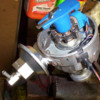If the quality of the parts or their implementation was the problem:
• Avoid using the highest lift rate camshaft lobes. Valve lift no more than about 0.570" theoretical (i.e. about 0.550" factual). Hydraulic intensity no less than "about" 52, i.e. stay away from Comp Cam's “X-treme Energy” cams and Lunati's “VooDoo” cams. Major intensity (solid tappet) no less than "about" 44.
• Make sure the valve springs are (1) installed at the proper height, and (2) are not even “close” to coil bind with the cam you’ve chosen. Valve spring force (3) no more than 130 pounds seated or (4) 330 pounds over the nose.
• Make sure (1) the rocker arms are not close to bottoming out in their “slot” at full closed or full open; (2) there is clearance between the rocker arms and push rods at full open, and (3) the rocker tips have clearance with the valve spring retainers at full closed.
• Purchase the cam and other valve train parts from a trustworthy manufacturer. There is one manufacturer who is (in my estimation) the source of 95% of all failed valve train parts.
• Custom order the cam. Cam cores come in different quality levels, the lobes are narrower in some cases, and lobe taper may vary. A flat tappet cam should have 0.002" taper on the lobe to aid in lifter rotation and break-in. Yet economical cams may only have about 0.0005" taper. So when you're custom ordering the cam touch upon the subject of core quality and lobe taper. Be sure to specify (1) the best quality cam core, and (2) specify 0.002" lobe taper. Also request (3) the cam grinder's best lobe polishing and (4) their best surface hardening treatment (nitriding).
• Use flat tappets manufactured in North America or Australia with trustworthy quality (Johnson HT900 for instance).
If lubrication was the problem:
• Use motor oil having very high wear protection properties for both break-in AND normal operation (Valvoline VR1 for instance).
• NEVER use break-in oil because break-in oil has low wear protection properties. Break-in oil is not intended for cam lobes, it is intended to help rings seat, but modern rings and modern cylinder honing techniques preclude the need for break-in oil.
• NEVER use an oil additive; the high zinc ZDDP additives diminish the wear protection properties of a good motor oil.
• Run the motor above 2000 rpm during the entire 30 to 45 minute break-in period of the camshaft to insure the camshaft and tappets are "splash lubricated" adequately.
Link to a provocative blog regarding the wear protection properties of motor oil

